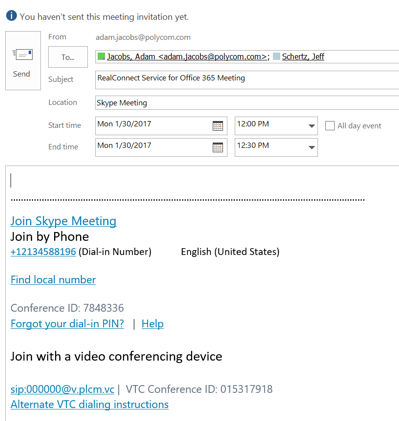The day is getting closer where you can look to Microsoft Office 365 Skype for Business to be able to meet all the capability of your UC collaboration platform in the cloud. The hardest part is knowing what is available and what would you need to purchase to make the complete package for your organisation.
E3 licenses will get you the Skype for Business cloud platform for IM/P, Web and Video Conferencing within your organisation and federated Skype for Business partner organisations. The additional steps to making your UC experience complete needs to include additional services in my opinion.
- Allowing participants to join your organisations meetings by a phone number, which is commonly known as a PSTN Audio Conferencing Bridge
- Allowing participants to join your organisations meetings by any video conferencing endpoint, which I call a Video Interop Bridge
- Allow the public and your employees to make/receive standard phone calls, which Microsoft have called Cloud PBX
- Plus a Voice Plan (carrier call rates)
Lets break down what these additional services are and why they complete a collaboration platform.
Once you adopt a collaboration platform you soon realise it is only as good as the customers, partners and employees that are stripped with the same colour as you, in this case sky blue.
We have Skype for Business, BUT we have plenty of customers and partners that have different flavours and they can’t join our meetings and collaborate.
This is where we must add the capability for external parties to join our business collaboration with ease.
Join by phone
First thing, make your meeting accessible (at a minimum) via the PSTN. At a base level offer a phone number for a party to join via a standard phone call. Everyone has a mobile or desk phone and we can cover this off pretty easy.
This is achieved via the PSTN conferencing user license in Office 365.
Join with a video conferencing device
Secondly, make your meetings accessible via any video conferencing endpoint. This is the next level collaboration for your organisation. Acknowledging that not all parties are doing things the same as you and allow them to join via a video interoperability services that is available through Polycom and Microsoft.
This is achieved via Polycom Real Connect services user license obtained through Polycom and added to your Office 365 license bundles in the portal.
What do I have as a result?
Subscribing to these two services on top of your base Skype for Business license will give your employees the ability to create meetings with additional details for participant joining. As shown below in a calendar invite created by the meeting organiser.

In the above image, both sets of meeting details for phone and video conferencing are automatically added via the user licenses. If the scheduler doesn’t have the license, then the Skype meeting doesn’t include the detail. Simple.
PSTN Calling
The last piece of the puzzle is allowing your employees to make PSTN calls to domestic and international numbers from their Skype for Business account. This was commonly referred to as Enterprise Voice in an on-premises deployment but has taken on a different name in the cloud service called “Cloud PBX”. Cloud PBX enables your employees with a direct inward dial number for inbound and outbound calling. Microsoft grants you the capability of punching digits into the Skype for Business client to normalise to a phone number, but you’ll need a voice plan associated with that user with call rates.
At the time of writing Cloud PBX is available, but the voice plans have not been made available to the public in the Australia region.
Summary
If I want the complete all inclusive collaboration platform for my organisation, I can purchase the user subscription licenses to achieve nirvana.
- PSTN Conferencing Add-on
- Polycom RealConnect for Office 365
- Cloud PBX with a Voice Plan
Licenses 1 and 2 in my opinion are a must if you plan to use Skype for Business as your collaboration/meeting space. While license 3 is when you start looking at Skype for Business to replace your existing telephone system (PBX) capability.
